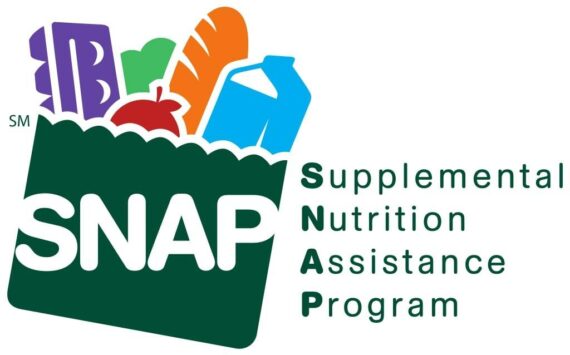Youve been around a Web site or two. And if youre like me, youve bumped into a few where you came away fairly confused about how to navigate or even what they were about.
Ive seen a few that are so 1990s that need a good dose of basic principles of simplified design: too much needless text, too many huge images, the whole site on one long page, the antiquated and folksy welcome to my site greeting. Ive got my pet peeves, I guess.
I know what I dont like, but a Web usability study will show a Web site owner what really works in a web site to make it useful and clear to everyone.
Bad Web site design affects everyone who is online:
n If youre a Web site visitor, you want a site to be obvious about what it has to offer and a clear path to what you are looking for.
n If you are a Web site developer or have a business site, how your Web site performs will be critical to your success. Your Web site is as important to your business as the telephone. With customer expectations high, Web site visitors want as good a service online as visiting you or talking to you personally.
Since we cant all be Web usability experts, I turned to author and usability consultant Steve Krug, for advice.
Krug has solved fundamental Web design problems for companies like Apple, AOL, Barnes and Noble, Excite@Home and Netscape, evaluating and improving their online Web site presence.
His Massachusetts-based consulting firm is Advanced Common Sense at www.sensible.com.
Krug talked to us about his top dos, donts and golden rules when it comes to Web site design.
He has recently written all his advice in his book Dont Make Me Think: Common Sense Approach to Web Usability, currently ranked at Amazon.com in the top 200 books.
Q: What exactly is Web site design usability?
Krug: Usability just makes whatever youre working on easier to use. For the last five years Ive been doing mostly Web usability, which means fine-tuning Web sites so that people can make their way through them with a minimum of effort and get what they want to do done.
Q: In your book, you mention that to design effective Web pages, you have to learn to live with three facts about real-world Web use. Can you run these down for us?
Krug: It finally dawned on me that one of the big problems was the big gap between the way designers and marketers think people will use the site as opposed to the way people actually use it. We tend to think people use it in a fairly orderly fashion. But if you ever sit down and watch people use the Web, which is part of what usability people do, the three things I boil it down to are, first, they dont read pages. They blow through them on their way to finding something to read. Along the way they kind of just scan, looking for words that jump out.
The second is how they make choices. Theyre going to stop and assess all the options weve offered the on the page and make a choice based on their interest. They find the first thing that even vaguely resembles what theyre looking for and then they click on them. Thats the nature of the Web: we find things, you click on them and they take you closer to what youre looking for. We satisfice, a cross between satisfying and sufficing.
Finally, the third fact of real-world Web use is when were designing stuff, we think that people are going to figure out how it works. In reality, people are teetering on the brink of disaster most of the time. They have no idea how it works – and they dont care. All they care about is getting to the stuff theyre actually using.
Q: Lets look at the home page, the first impressions we have of a Web site. Give us some basic elements of design and layout of that page?
Krug: If you dont get it right from the beginning and people get off on the wrong foot – forget it! The likelihood is high that people will start stumbling off in increasingly wrong directions and not recover.
Your home page should convey the big picture. What is the site about? Use a good short tag line and welcome blurb. Rotate site promotions. Remove everything nonessential.
The main thing that goes wrong is that, because the home page gets so much traffic – by definition the home page is going to get more traffic by the factor of ten than any other page – all the stakeholders on the page, the marketing people and everybody, have a strong interest in getting their content on the that page. Over time it kind of deteriorates the home page. What gets squeezed out as a result is for people to come to the home page and right away have a concept of what this site is, what its about, what it has to offer – just the main points. Instead, what you end up with is a lot of things to entice people to go further into the site – which may or may not work.
You want to divide your home page between things that entice and demonstrate the range of what you have, like a magazine cover has little blurbs for all the stories inside. But you also need to devote enough navigation to give people a clear idea of where they are and a clear idea of who is talking to them. There are five questions you want to answer on the home page, which I explain in my book. The main question to answer is what do you do?
Next Fridays technology column: Well drill down deeper into usable Web design with Steve Krug and his take on effective navigation, the best use of images on a site, and the dichotomy of a site designer seeing their work as great literature while a site users reality is much closer to a billboard going by at 60 miles an hour.
Steve Krug’s Web site can be found at:
www.sensible.com.
His book is Dont Make Me Think: Common Sense Approach to Web Usability.
A full audio interview with Steve Krug and Web usability can be heard at:
www.webtalkguys.com.
Dana Greenlee writes about technology every Friday in the Index. She is also co-host of WebTalkGuys, a radio talk show featuring technology news and interviews. The show is broadcast on CNET Radio in San Francisco/San Jose, Boston, and over the XM Satellite Radio Network Channel 130 every Saturday at 10 a.m. PST and Sunday at 7 p.m. PST. The show is available on the wireless Web on NexTel phones. WebTalkGuys is also Webcast on the Internet on demand at:
www.webtalkguys.com.
It is also streamed live over:
www.cnetradio.com.
This week in the Index's tech column` "Help me! Help me!"
Tags: Amazon.com, AOL, Apple, author and usability consultant, Barnes, Boston, CNET Radio, Common Sense, Dana Greenlee, Massachusetts, Netscape, Noble, online Web site presence, radio talk show featuring technology news, real-world Web use, San Francisco, San Jose, site designer, solved fundamental Web design problems, Steve Krug, technology column, usable Web design, web site design, Web site design usability, Web site developer, Web site owner, Web site visitor, Web site visitors, Web Usability, Web usability experts, Web usability study, WebTalkGuys, wireless Web, www.cnetradio.com, www.sensible.com, www.webtalkguys.com, XM Satellite Radio Network Channel






